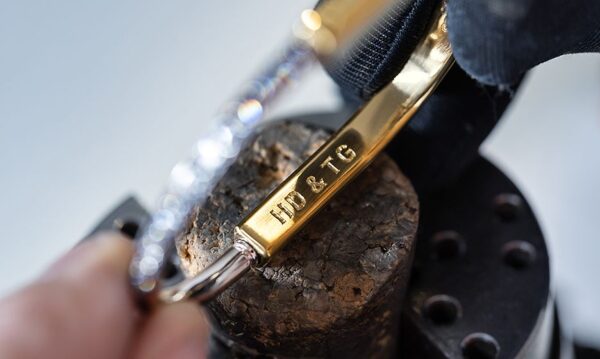
Engraving, a time-honoured tradition that melds artistry with precision, has recently become a focal point of sustainable innovation. As industries across the globe recognise the ecological implications of their practices, it is no surprise that modern engraving is moving towards more sustainable materials and techniques.
Engraving, a time-honoured tradition that melds artistry with precision, has recently become a focal point of sustainable innovation. As industries across the globe recognise the ecological implications of their practices, it is no surprise that modern engraving is moving towards more sustainable materials and techniques.

Historical Context
Traditionally, engraving was conducted using metals like copper, silver, or zinc. These materials were mined, which posed environmental challenges such as habitat destruction, soil and water pollution, and the consumption of vast amounts of water and energy.
Today, as the world becomes more ecologically aware, engraving has undergone a transformation, both in terms of materials and processes.
Transitioning to Sustainable Materials
Sustainable materials refer to resources that are either renewable or have a minimal environmental footprint. These materials are harvested or produced in a manner that is not detrimental to the environment, ensuring long-term ecological balance. Some examples in the context of engraving include:
- Bamboo: This fast-growing plant is an excellent sustainable alternative to traditional woods used in engraving. Bamboo can be harvested without killing the plant, ensuring that it remains a renewable resource.
- Recycled Metals: The use of recycled metals reduces the demand for new mining activities. Engravers now opt for recycled copper, silver, and other metals, lowering the environmental impact.
- Bioplastics: Derived from renewable plant sources, bioplastics are increasingly used in engraving, offering a more eco-friendly alternative to petroleum-based plastics.
Eco-Friendly Engraving Techniques
Technological advancements have also played a crucial role in promoting sustainable practices in modern engraving. Below are some of the progressive techniques being embraced:
- Laser Engraving: Unlike traditional engraving, which often uses acids or other potentially harmful chemicals, laser engraving is a non-contact method. It uses a laser beam to etch designs, minimising waste and eliminating the need for chemicals.
- Water-Based Inks and Dyes: Many engravers have transitioned from using solvent-based inks and dyes to water-based alternatives. These are less toxic and degrade more easily, reducing environmental contamination.
- Energy-Efficient Machinery: The shift towards energy-efficient engraving machines that use less power, coupled with renewable energy sources, has significantly reduced the carbon footprint of the engraving process.
Economic and Social Impacts
Sustainable engraving not only benefits the environment but also holds economic and social advantages. For instance, The Engraving People, a forward-thinking business in this sector, has shown that eco-friendly practices can attract a broader customer base who are keen on supporting green initiatives.
Moreover, using sustainable materials often translates to cost savings in the long run, as there’s less dependency on finite resources. Furthermore, promoting sustainable practices creates job opportunities in the renewable resources sector, adding a socio-economic layer to the environmental benefits.
Challenges and the Path Forward
While the transition to sustainable materials and techniques in engraving is commendable, challenges persist. The initial investment required for green machinery and technology can be substantial. Also, there’s a learning curve associated with mastering new materials and techniques, potentially slowing down production in the short term.
However, the long-term benefits, both ecological and economic, far outweigh these challenges. As consumers become increasingly environmentally conscious, businesses that don’t adapt to sustainable practices risk becoming obsolete.
As such, engraving businesses should see this shift not as a burdensome obligation but as an opportunity for growth, innovation, and positive environmental stewardship.
Conclusion
The world of modern engraving is a testament to how traditional industries can evolve and adapt to the pressing ecological concerns of the 21st century. By embracing sustainable materials and innovative engraving techniques, the industry sets a precedent for others to follow.
As both consumers and businesses continue to prioritise sustainability, it’s evident that the marriage between artistry and ecology is not only possible but also beneficial for all parties involved.
